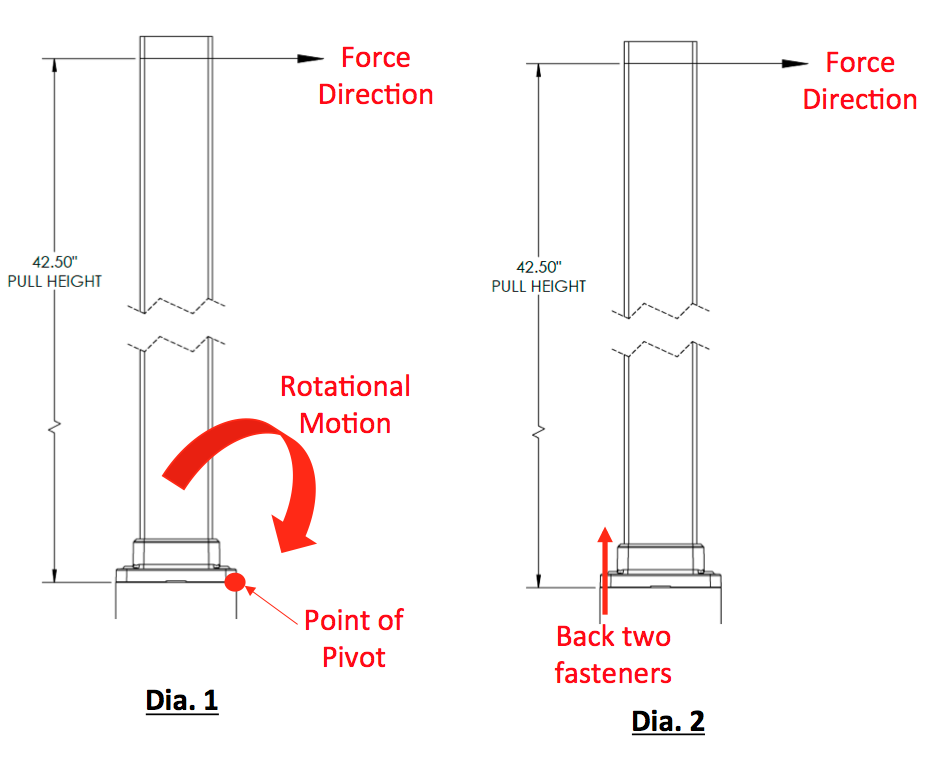Fasteners
Why don’t all four fasteners help hold the force?
As we know, the job of a fastener is to hold our base plates in place when a force is applied to the top of our post or railing. When a fastener can no longer resist this force, it is either withdrawal or tensile failure.
In Dia. 1, we see how the force is transferring through the post. As it rotates, it will want to lift up on the back two fasteners as shown in Dia. 2. This takes place before the force is able to transfer to the front two fasteners. So once the failure of the back two fasteners has occurred, the front two will not have the necessary holding power to keep the base plate in place. Withdrawal strength is determined not by the length of the fastener, but by the length of the threads.
Another consideration is the tensile strength of the fastener. Tensile strength is essentially the force that will be required before the screw head breaks away from the shank of the screw. Fasteners must have a balance of withdrawal, tensile and shear strength in order to work properly. Shear strength is typically only a serious consideration when working with wall mounts in which the fastener is being strained from a side direction. Most fasteners use materials that have very high shear strengths which makes these scenarios much easier to deal with.

